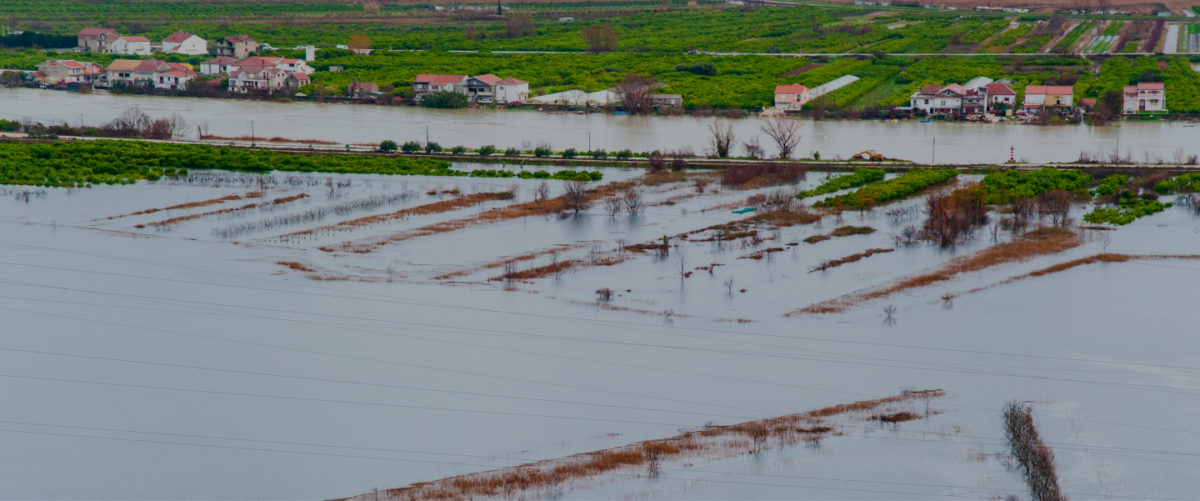How Biogas Factories Could Put Our Lowest State Underwater
Published Jun 21, 2022

As the country's lowest-lying state, Delaware can't afford the consequences of climate change. Two proposed biogas projects will only worsen those problems.
We know we’re running out of time on climate change. Without a rapid drawdown on fossil fuels, catastrophic effects of global warming will become unavoidable. But in Delaware, the poultry industry and its allies are going in the opposite direction. They’re promoting a new fuel: methane derived from poultry waste. Rather than reduce emissions, biogas will only worsen the climate effects, like sea-level rise, for our country’s lowest-lying state.
Biogas Will Lock in Climate-Warming Emissions
Plans to extract methane from poultry waste in Sussex County threaten to add to greenhouse gas emissions for years to come.
Delaware currently faces two proposed projects, one by Bioenergy DevCo and one by CleanBay Renewables. These projects would release massive amounts of methane, the greenhouse gas 90 times more potent than carbon dioxide. Emissions from the Bioenergy DevCo project alone would have the same per-year climate impact of a typical car driving 71 million miles.
Poultry waste itself doesn’t emit significant amounts of methane. However, the biogas projects planned for Delaware deliberately create new greenhouse gases to “capture” for profit. To do that, they need to haul in factory farm waste from around the tri-state area. All that means more emissions, to the tune of more than 20,000 diesel-powered truck trips per year.
On top of that, it appears that the methane from Bioenergy DevCo would not be used instead of fracked gas; it would be used in addition to fracked gas. This will entrench fossil fuels in addition to factory farms, while allowing the industry to slap the “renewable” label on the same old climate-destroying gas system.
Without serious climate action, here’s what Delawareans can expect.
Hotter Weather
The average temperature in Delaware has risen about 2.5 degrees Fahrenheit since 1895. Within 50 to 60 years, scientists expect the state’s average temperature to exceed its preindustrial average by more than 4 degrees. Extremely hot days will likely also increase. Currently, Delawareans experience an average of two days over 100 degrees each year, but scientists predict we’ll experience as many as 28 days above 100 degrees by 2100. Heat waves are already the leading weather-related cause of death in the United States, and climate change will only make them worse.
Sea-Level Rise
Melting polar ice sheets have caused the world’s oceans and bays to rise, and Delaware, already the lowest-lying state in the nation, is sinking at the same time. (In fact, sea level is rising at Bowers Beach, Del. faster than anywhere else on the East Coast.) Sea level along Delaware’s coasts has already risen more than one foot since 1900. With continued warming, Delaware’s coasts will likely disappear under anywhere from 16 to 48 inches in the next century.
Property Loss
If Delaware’s coastal sea levels rise even two feet, the state will lose about 8% of its land (a little over 110,000 acres) and nearly all of its protected wetlands. Dozens — if not hundreds — of homes would be destroyed. Currently, about 22,000 Delawareans are at risk from coastal flooding, but that number could surpass 30,000 in just a few decades. Millions of dollars of damage are almost inevitable, and would be devastating to Delaware’s beachside tourism industry.
Pests and Disease
Climate change will warm the state earlier in the year and bring more rain — and more puddles. This is like rolling out a welcome mat for mosquitos. Though already, researchers estimate that Delaware’s mosquito season has extended weeks beyond its historical average. And more mosquitoes means more opportunity for blood-borne diseases like Zika and West Nile Virus to spread.
Ecological Mayhem
Finally, climate change will displace wildlife and their habitats. For instance, each spring, nearly a million migratory shorebirds feast on horseshoe crab eggs in tidal flats and beaches. But those tidal flats and beaches will likely disappear underwater.
Additionally, rising sea levels will bring salt water further up rivers, eventually intruding into aquifers near the coast. Soils might become too salty for crops and trees that currently grow in low-lying areas. Upland, early warm weather could prompt many wildflowers and woodland plants to grow and blossom too soon for the migratory animals that feed on them.
How You Can Fight Back
Ultimately, we must transition off of carbon-based fuels like methane as quickly as possible. Pursuing new sources is unconscionable. Delaware’s elected officials must instead urgently pursue real solutions to the climate crisis. Biogas has no part in that solution.
The companies behind the biogas scheme need state permits to go ahead with their dirty projects. Governor John Carney has the power to say NO to biogas. Use your voice to tell him that Delaware doesn’t need another source of greenhouse gas emissions.
Tell Governor Carney that Delaware is done with greenhouse gases.
Enjoyed this article?
Sign up for updates.
TO TOP


